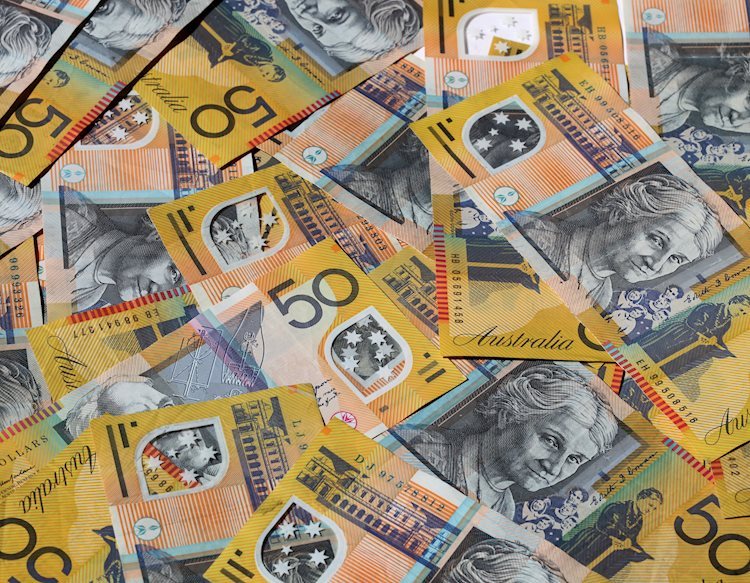- Australian Dollar reaches a three-month high of 0.6852 against the US Dollar on Tuesday.
- AUD/USD is supported by China’s stimulus measures, a weaker USD, and positive global market sentiment.
- Reserve Bank of Australia (RBA) held rates steady and maintained its hawkish stance, further supporting the AUD.
The AUD/USD pair rallied to near 0.6870 in Tuesday’s North American session, producing a three-month high. The Aussie asset gained ground after China’s massive stimulus boost to revive household spending, real estate demand, and economic growth. The Reserve Bank of Australia (RBA) held rates steady and maintained a hawkish posture, also adding to the Aussie’s gains.
The Australian economic outlook is uncertain, but the RBA has taken a hawkish stance due to high inflation. As a result, markets are now expecting only a 0.25% interest rate cut in 2024. This is a significant change from previous expectations, which included a series of rate cuts. The RBA’s decision to adopt a hawkish stance has dampened market sentiment and led to a decrease in inflation expectations.
Daily digest market movers: Aussie on the rise after RBA hold, CPI data in focus
- RBA holds rates steady at 4.35%, signaling no near-term rate cuts despite recent data.
- Michele Bullock, chair from the RBA then delivered a press conference, repeating her well-known hawkish message and affirming rates will remain on hold for the time being.
- Bullock added that the Board does not see rate cuts in the near term, as recent data has not “materially affected” the policy outlook.
- In addition, the PBoC announced measures to support the Chinese economy, including a 50 bps RRR cut and a 0.2% reduction in the 7-day repo rate. Any support or aid given to the Chinese economy tends to benefit the Aussie.
- AUD/USD also gains further ground after tepid US data fuels speculation of a 50 bps Fed rate cut in November.
- Australia’s August Monthly Consumer Price Index is expected to rise by 2.8%, down from 3.5% in July.
AUD/USD technical outlook: Bullish momentum mounts with pair nearing July 2023 highs
AUD/USD’s upward movement shows potential. Daily indicators indicate a positive trend, but the AUD/USD is not yet in overbought territory, so the pair has some more room to continue the trend.
Bulls will face strong resistance at the 0.6900-0.6930 range. In case of being rejected the pair could fall to the 0.6800-0.6850 zone to consolidate the recent gains.
RBA FAQs
The Reserve Bank of Australia (RBA) sets interest rates and manages monetary policy for Australia. Decisions are made by a board of governors at 11 meetings a year and ad hoc emergency meetings as required. The RBA’s primary mandate is to maintain price stability, which means an inflation rate of 2-3%, but also “..to contribute to the stability of the currency, full employment, and the economic prosperity and welfare of the Australian people.” Its main tool for achieving this is by raising or lowering interest rates. Relatively high interest rates will strengthen the Australian Dollar (AUD) and vice versa. Other RBA tools include quantitative easing and tightening.
While inflation had always traditionally been thought of as a negative factor for currencies since it lowers the value of money in general, the opposite has actually been the case in modern times with the relaxation of cross-border capital controls. Moderately higher inflation now tends to lead central banks to put up their interest rates, which in turn has the effect of attracting more capital inflows from global investors seeking a lucrative place to keep their money. This increases demand for the local currency, which in the case of Australia is the Aussie Dollar.
Macroeconomic data gauges the health of an economy and can have an impact on the value of its currency. Investors prefer to invest their capital in economies that are safe and growing rather than precarious and shrinking. Greater capital inflows increase the aggregate demand and value of the domestic currency. Classic indicators, such as GDP, Manufacturing and Services PMIs, employment, and consumer sentiment surveys can influence AUD. A strong economy may encourage the Reserve Bank of Australia to put up interest rates, also supporting AUD.
Quantitative Easing (QE) is a tool used in extreme situations when lowering interest rates is not enough to restore the flow of credit in the economy. QE is the process by which the Reserve Bank of Australia (RBA) prints Australian Dollars (AUD) for the purpose of buying assets – usually government or corporate bonds – from financial institutions, thereby providing them with much-needed liquidity. QE usually results in a weaker AUD.
Quantitative tightening (QT) is the reverse of QE. It is undertaken after QE when an economic recovery is underway and inflation starts rising. Whilst in QE the Reserve Bank of Australia (RBA) purchases government and corporate bonds from financial institutions to provide them with liquidity, in QT the RBA stops buying more assets, and stops reinvesting the principal maturing on the bonds it already holds. It would be positive (or bullish) for the Australian Dollar.
Read the full article here

